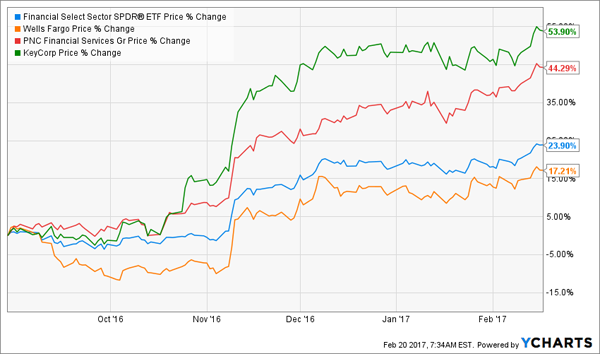Investment Strategist
The One Place to Find 6.5% Dividends and 82% Upside Now
Michael Foster, Investment StrategistUpdated: February 28, 2017
Things are tough for contrarian investors these days.
Back in August, for example, I recommended buying financial stocks. It was an easy call to make.
At the time, the Financial Select Sector SPDR Fund (XLF) was down 4% from a year earlier, and the worst performers had fallen much further. I specifically saw value in Wells Fargo (WFC), KeyCorp (KEY) and PNC Financial Services (PNC), which had fallen 14.5%, 17.6% and 12.0%, respectively.
I bought heavily into these three stocks at the time, expecting financials to recover over the short term, especially if Trump won the election.
Here’s how they’ve done since then:
Financials Rebound With Gusto

The strong recovery since August has convinced me to back off on financials, since the market has finally seen in these firms what I saw in them last summer.… Read more



